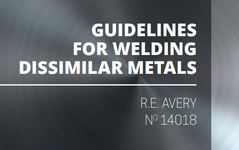Is there a technical document that can be referenced to see what steels can be welded together and which cannot? I assume it goes much deeper than just matching the yield strength to the electrode. I have a supplier wanting to substitute some materials and the yields are the same, but I'm not sure if they are able to be welded together. RISA Connection throws out some errors when I try chosing different materials for a fillet weld (even if Fy and Fu for both materials are the same), but doesn't give a reference to why they cannot be used together even though the yields match. I'm thinking it might be due to chemical composition but I haven't really looked much into this before.
This post is strictly for subbing materials; I know different standards have different requirements for tolerance on shapes (I.E. ASTM A500 vs CSA G40.20) and have taken that into consideration.
This post is strictly for subbing materials; I know different standards have different requirements for tolerance on shapes (I.E. ASTM A500 vs CSA G40.20) and have taken that into consideration.
Last edited:



